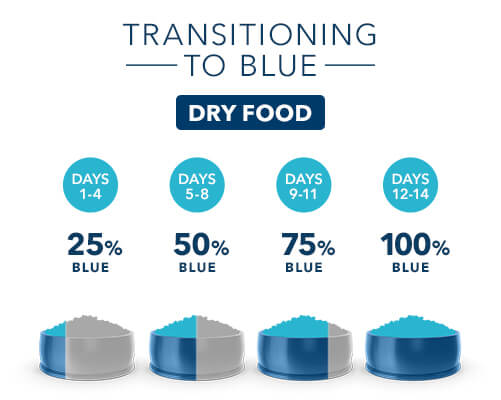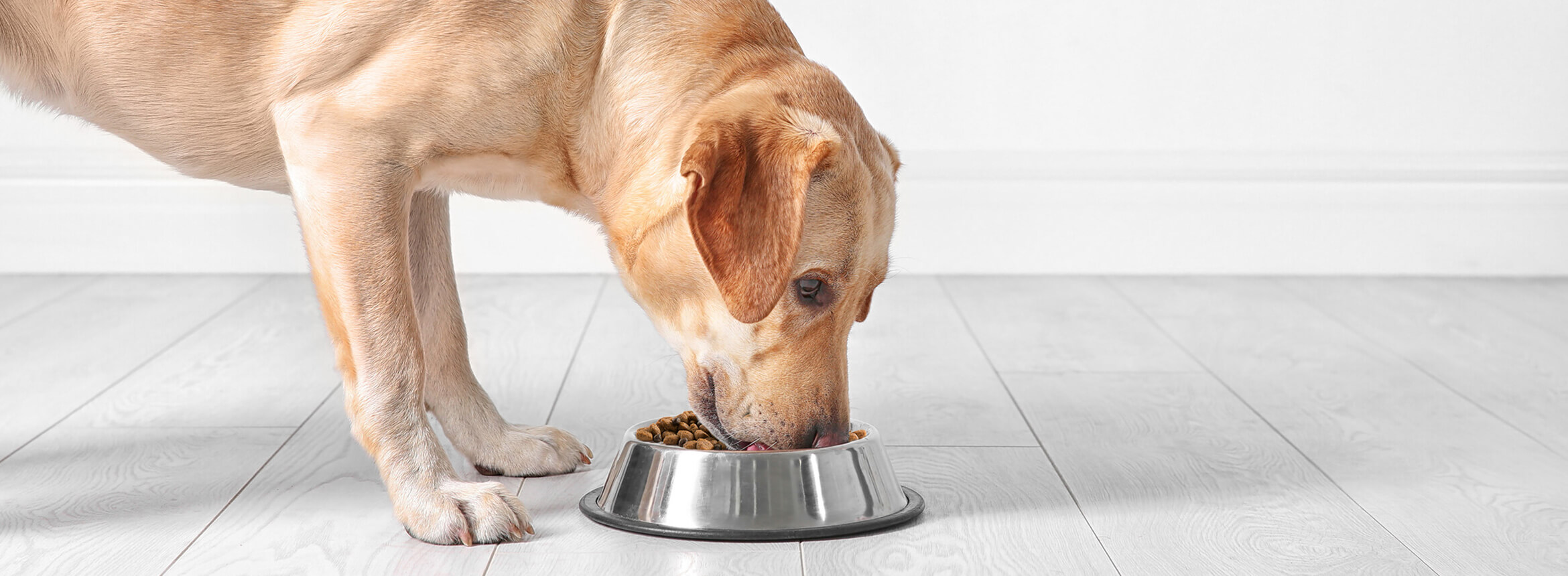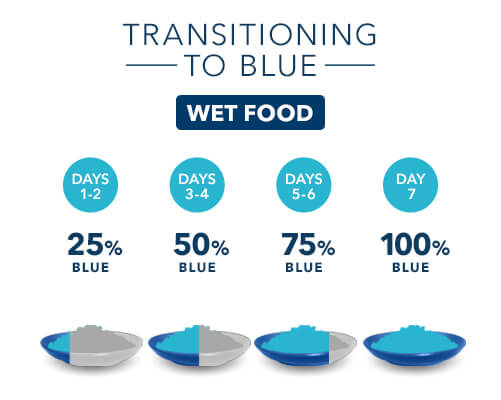Transition Dog Food Gradually
Switching your dog’s food suddenly can cause gastrointestinal symptoms such as diarrhea, vomiting and decreased appetite. Transitioning food slowly gives your dog’s GI system time to adjust.
Plan on taking 1-2 weeks to transition from one dog food to another. Start by adding a small amount of new dog food in with the original food.
Wet Dog Food: Switching Dog Food in Seven Days
Pro Tip: Mix the new dog food thoroughly with the current food so your dog can't pick and choose which food to eat.
Switching dry dog food follows the same slow transition, extended over 14 days instead of seven.
Dry Dog Food: Switching Dog Food in 14 Days

Note: Check your dog’s stools before moving on to the next percentage of new food. The stools should be firm, not soft or watery. It may take three to four days for your dog’s intestines to adjust to the new food mixture.
Monitor Your Dog’s Reaction Closely
Dogs who have sensitive stomachs, food allergies or other gastrointestinal diseases may need more time to switch foods. Every dog is different, so monitor your dog’s individual response. If your buddy shows changes in appetite, vomits or has diarrhea, transition even slower. If your dog still has an upset stomach after switching slowly, tell your veterinarian. He or she may advise a different type of diet completely.
Pro Tip: The best way to monitor your dog’s digestive health is to evaluate his bowel movements. Minor variations in stool color and consistency are normal, but tell your veterinarian about any major changes.
No matter what, if you follow the slow and steady approach to switching dog food, your best buddy will most likely be enjoying his new food soon. Bone-appetit!


